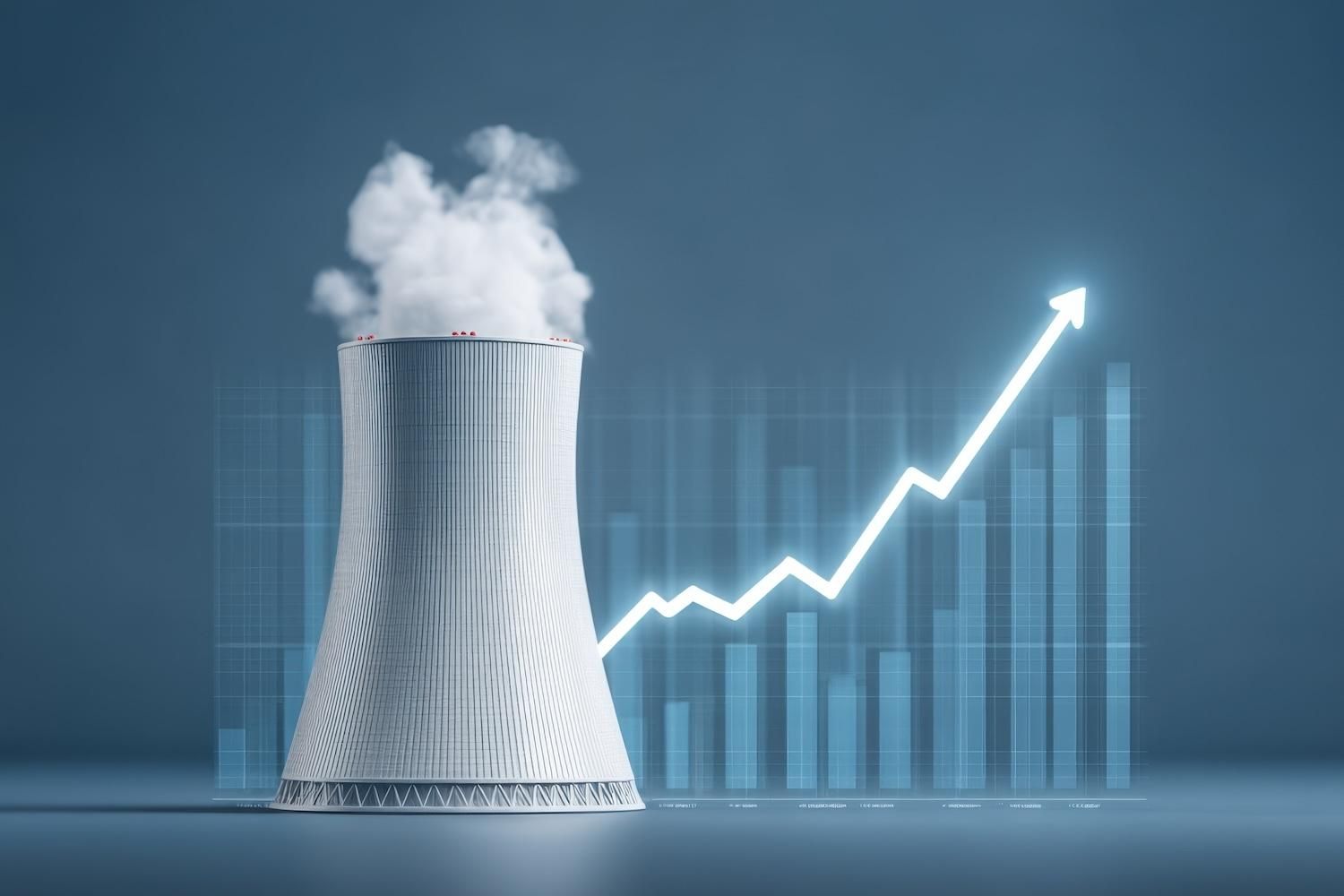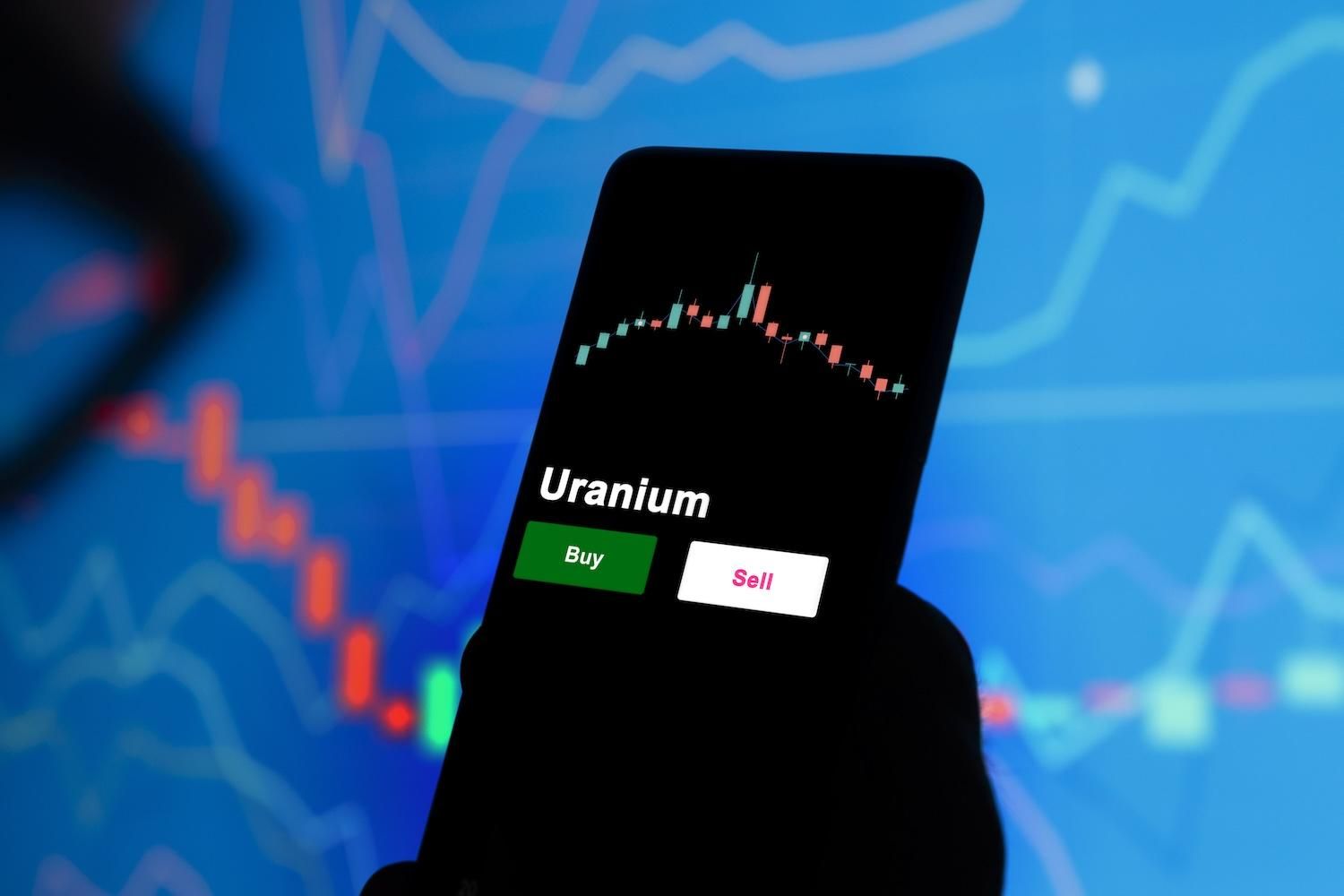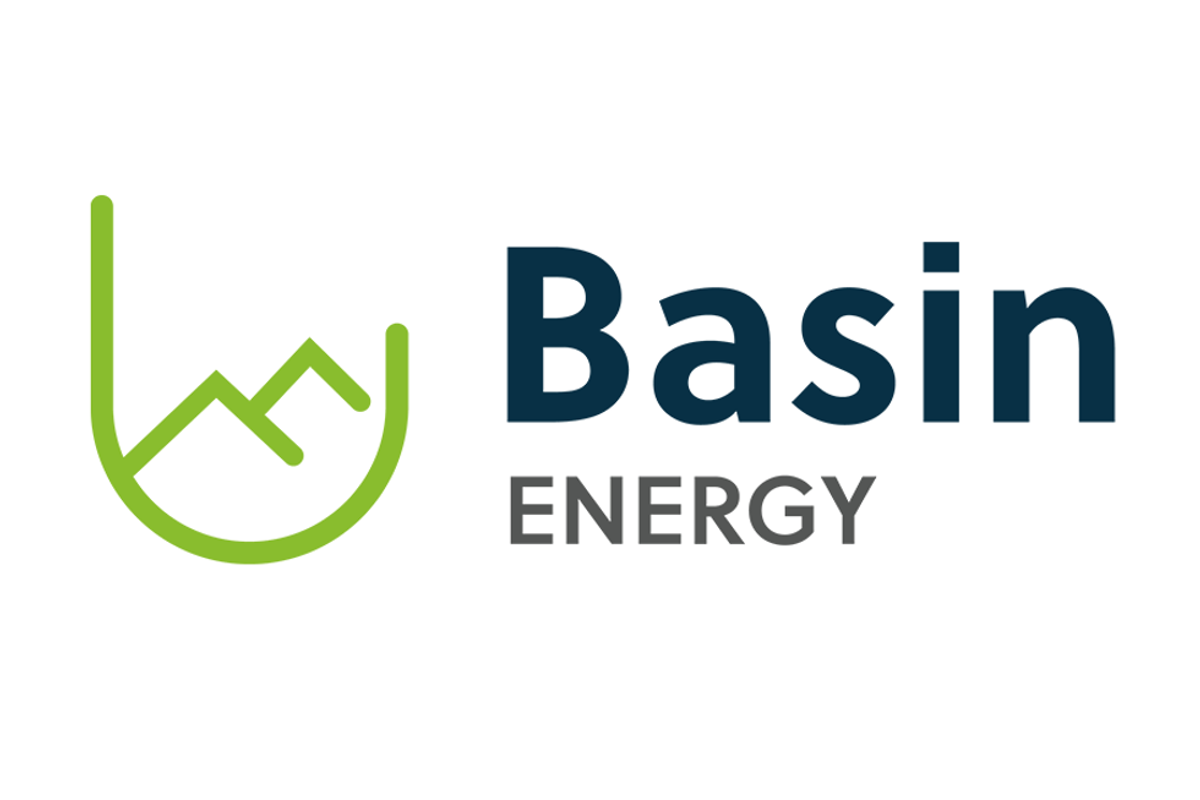
January 12, 2025
Greenvale Energy Ltd (ASX: GRV, “Greenvale” or “the Company”) is pleased to advise it has acquired a 100% interest in the advanced high grade Oasis Uranium project. The Oasis deposit and associated regional uranium anomalism are contained with EPM 27565 which cover 53 subblocks over an area of 90 km2 and located 250 km west of Townsville and 50 km west of Greenvale in FNQ (Figure 1). The project area is located entirely within the Lynd Station pastoral land. The company has acquired the 100% interest from the vendors Maverick Exploration Pty Ltd, Remlain Pty Ltd and Mineral Intelligence Pty Ltd (equal 1/3 each interest) for a consideration of $200,000 cash and the issue of 20 million Greenvale shares.
Oasis was discovered during the 1970s uranium exploration push by International companies , most notably Esso whose subsequent work (1977-1979) defined high priority targets with only the Oasis deposit drill tested to date Oasis occurs along a structure associated with a major crustal terrane boundary. (Lynd Mylonite Zone). The metamorphic host rocks, voluminous granite and leucogranite and deformation history share many of the characteristics that can be interpreted as Intrusive (Alaskite) style of uranium mineralisation . This is an exciting possibility, if further exploration continues to strengthen the analogy with world class uranium mines like the Rossing, Namibia.
Highlights:
- Greenvale acquires 100% interest in EPM 27565, covering 90 km2 of fault bound alkaline intrusive and metamorphic terrane which includes the high grade Oasis uranium deposit and 8 additional high priority uranium targets
- Airborne radiometric uranium anomalies were located by Anglo American in 1973, Esso completed major on ground work 1977-1979 1nd drilled 46 holes (32 diamond, 14 percussion) for a total of 4755 m. Esso defined high grade primary uranium mineralisation over a 300m strike length and 200m vertical depth. Mineralisation remains open at depth and possibly along strike.
- Four due diligence diamond drill holes completed in 2006 by Glengarry Resources validated the historic Esso data and confirmed continuous high grade mineralisation with intercepts up to 1m @ 0.72% U3O8 (15.8 lbs/t).
- Oasis shear is interpreted to extend undercover for another 1.5Km to the north and remains untested for extensions to mineralisation.
- Historical radiometric and magnetic data identified large zones of structurally controlled anomalism which remain untested by drilling
- Most recently Terra Search Pty Ltd reprocessed and interpreted the historic geophysical data identifying 9 priority Uranium anomalies over a 10km strike length adjacent to ,, and apparently emanating from the major terrane boundary delineated as the Lynd Mylonite Zone.
- Geoscience Australia (GA) have age dated Oasis Uraninite and associated alteration sericite which has determined a mineralisation age of 433 +/-4 Ma. This Silurian date coincides the uranium mineralisation with the major period of felsic plutonism present across the region. It also strengthens the association of the intrusive bodies of the age in the area which are the likely drivers of the U mineralization. The recording of alaskite intrusives of similar age , along with other features such as the mineralisation occurring in shear hosted structural niches within tightly folded high grade metamorphism associated with chlorite- biotite alteration, again strengthens the intrusive related ”Alaskite mineralization style” analogy.
- This latter point could be highly significant as Alaskites account for around 10% of global Uranium reserves and are generally large, moderate grade deposits, the most striking example being Rossing, Namibia.
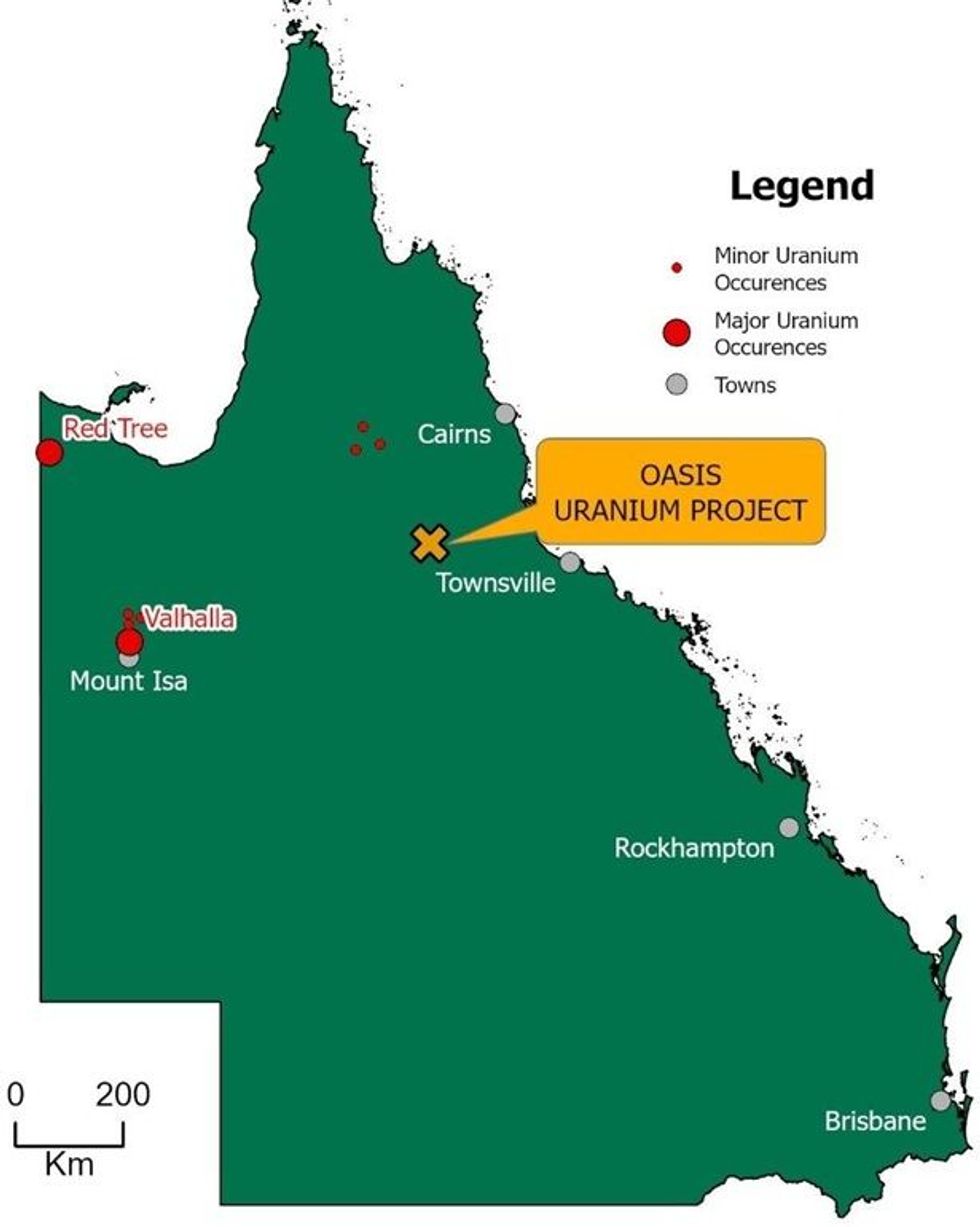
The acquisition of Oasis adds considerable weight to Greenvale’s portfolio of Uranium exploration projects and is expected to be rapidly upgraded to resource status during the 2025 exploration season.
Project Geology and Mineralisation
Geology within EPM 27565 is dominated by structurally complex mixture of intrusive granitic and metamorphic rocks of Proterozoic, , Ordovician and Silurian Age with recent age dating of uraninite from the Oasis deposit recording a Silurian age. The Lynd Mylonite Zone is a dominant structural feature which strikes north north-east through the centre of the exploration permit. Multiple faults and fractures splaying off the western side of the mylonite appear to control the distribution of extensive zones of uranium anomalism including the Oasis deposit. The granitic-metamorphic terrane hosting the uranium mineralisation is bounded 10km’s to the east by the Far East Mylonite Zone which strikes parallel to the Lynd Mylonite Zone
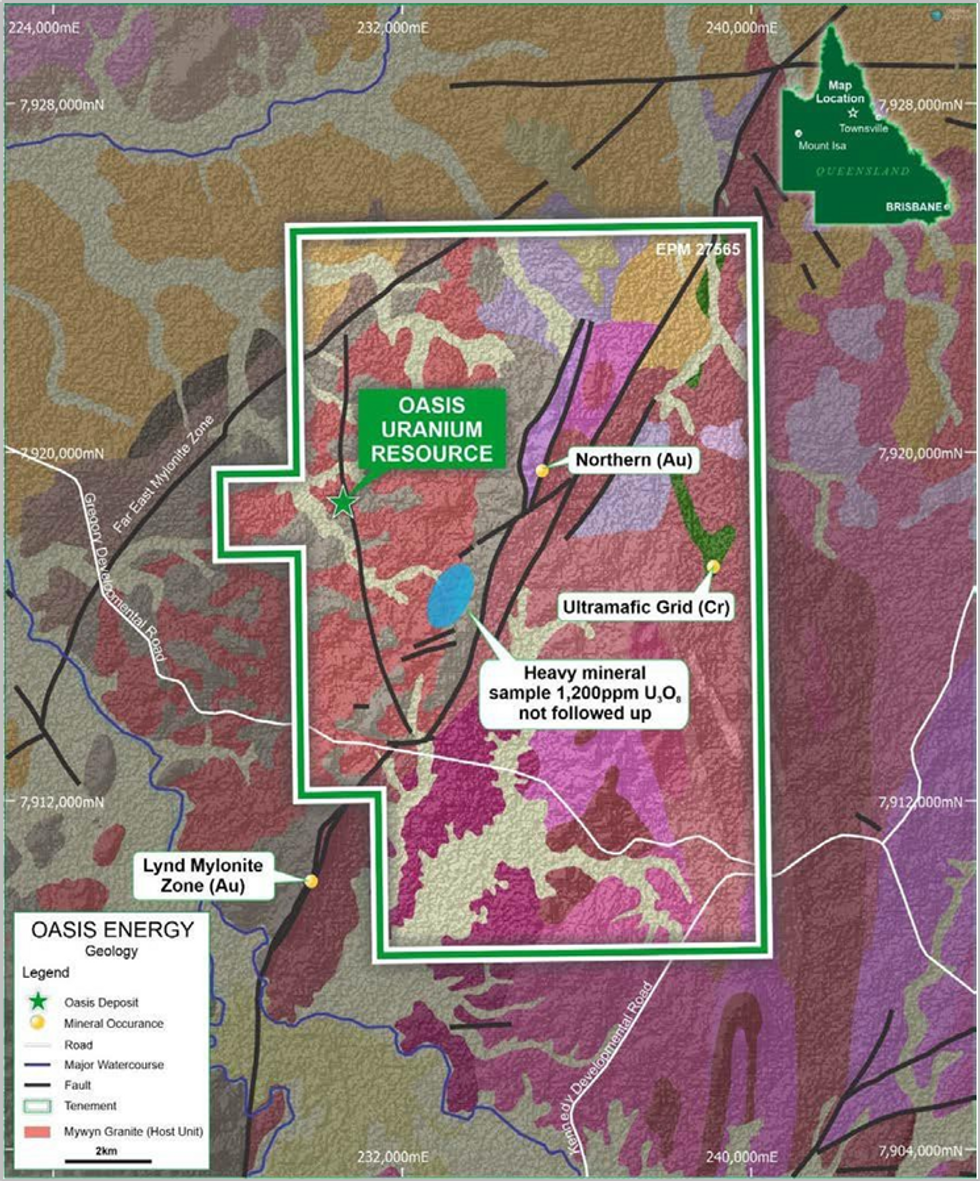
Previous Exploration
Uranium potential was first identified by Aust Anglo American in 1973-74 from airborne radiometrics followed up by ground radiometrics, mapping and trenching. Three clusters of anomalies were identified on the western side of the Lynd Mylonite Zone including the Oasis anomaly. From 1977-1979 Esso Minerals conducted ground radiometrics, mapping and auger drilling prior to completing 34 diamond drill holes and 14 percussion holes at the Oasis prospect. Esso drilling defined a continuous zone of high grade mineralisation of varying thickness over a 300m strike length and 200m vertical depth (Table 1). The mineralisation remained open along strike and at depth. No further work was undertaken at oasis or other prospects.
Click here for the full ASX Release
This article includes content from Greenvale Energy Ltd, licensed for the purpose of publishing on Investing News Australia. This article does not constitute financial product advice. It is your responsibility to perform proper due diligence before acting upon any information provided here. Please refer to our full disclaimer here.

Sign up to get your FREE
Greenvale Energy Investor Kit
and hear about exciting investment opportunities.
- Corporate info
- Insights
- Growth strategies
- Upcoming projects
GET YOUR FREE INVESTOR KIT
The Conversation (0)
27 May
Greenvale Energy
Strategic exploration of prospective uranium assets in Queensland and the Northern Territory
Strategic exploration of prospective uranium assets in Queensland and the Northern Territory Keep Reading...
09 December
Uranium Price 2025 Year-End Review
After 2024’s rapid rise, the U3O8 spot price remained more constrained through 2025, fluctuating between a relatively short range of US$63.17 (March 13) and US$83.33 (September 25) per pound. Entering the year, the price was sitting at US$74.56 before economic and geopolitical uncertainty pushed... Keep Reading...
08 December
American Uranium Eyes Resource, Scoping Study Update in 2026
American Uranium (ASX:AMU) is advancing drilling at its Lo Herma project in Wyoming, with work continuing into the winter season, according to Executive Director Bruce Lane in an interview with the Investing News Network. The company is currently awaiting results from recent hydrogeological... Keep Reading...
04 December
China’s Sole Uranium Miner Soars in Market Debut
China National Uranium (SZSE:001280) more than tripled in value during its first day of trading in Shenzhen, raising about 4 billion yuan (US$570 million) in its Wednesday (December 3) debut.According to an exchange filing cited by Bloomberg, the state-backed miner priced 248 million shares at... Keep Reading...
02 December
Niger Moves to Sell Uranium from Orano's Seized SOMAÏR Mine
Niger’s military government announced on Sunday (November 30) that it intends to put uranium produced by the SOMAÏR mine on the international market.General Abdourahamane Tiani, head of the junta, told state television that “Niger's legitimate right to dispose of its natural riches to sell them... Keep Reading...
30 November
Expands REE and Uranium Footprint at Sybella-Barkly
Basin Energy (BSN:AU) has announced Expands REE and uranium footprint at Sybella-BarklyDownload the PDF here. Keep Reading...
28 November
Orano Condemns Illegal Uranium Transfer from Niger Mine
Orano said it “strongly condemns” the removal of uranium from the SOMAÏR mine in Northern Niger.The French firm called the transfer illegal and a direct breach of the International Center for Settlement of Investment Disputes’ (ICSID) September ruling, which prohibits the material's sale or... Keep Reading...
Latest News

Sign up to get your FREE
Greenvale Energy Investor Kit
and hear about exciting investment opportunities.
- Corporate info
- Insights
- Growth strategies
- Upcoming projects
GET YOUR FREE INVESTOR KIT
Latest Press Releases
Related News
TOP STOCKS
American Battery4.030.24
Aion Therapeutic0.10-0.01
Cybin Corp2.140.00

